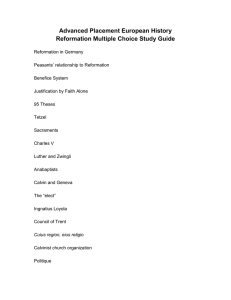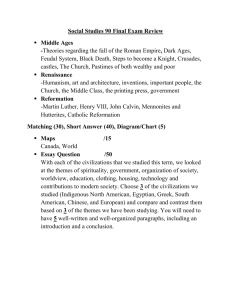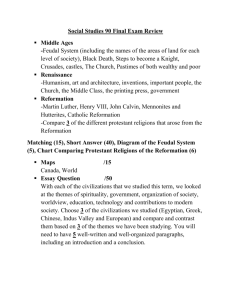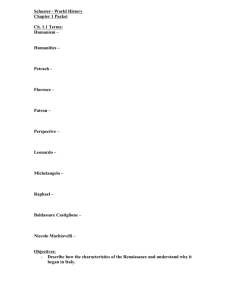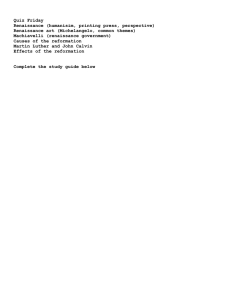THE RADICAL REFORMATION How might we define religious radicalism/fundamentalism?
advertisement
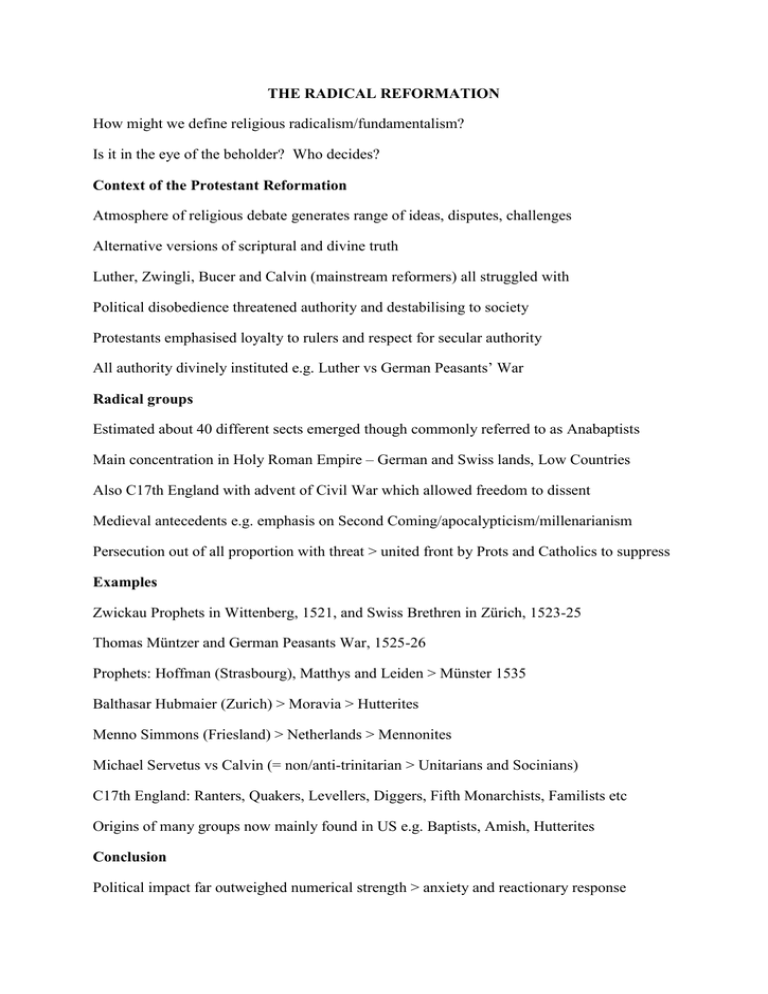
THE RADICAL REFORMATION How might we define religious radicalism/fundamentalism? Is it in the eye of the beholder? Who decides? Context of the Protestant Reformation Atmosphere of religious debate generates range of ideas, disputes, challenges Alternative versions of scriptural and divine truth Luther, Zwingli, Bucer and Calvin (mainstream reformers) all struggled with Political disobedience threatened authority and destabilising to society Protestants emphasised loyalty to rulers and respect for secular authority All authority divinely instituted e.g. Luther vs German Peasants’ War Radical groups Estimated about 40 different sects emerged though commonly referred to as Anabaptists Main concentration in Holy Roman Empire – German and Swiss lands, Low Countries Also C17th England with advent of Civil War which allowed freedom to dissent Medieval antecedents e.g. emphasis on Second Coming/apocalypticism/millenarianism Persecution out of all proportion with threat > united front by Prots and Catholics to suppress Examples Zwickau Prophets in Wittenberg, 1521, and Swiss Brethren in Zürich, 1523-25 Thomas Müntzer and German Peasants War, 1525-26 Prophets: Hoffman (Strasbourg), Matthys and Leiden > Münster 1535 Balthasar Hubmaier (Zurich) > Moravia > Hutterites Menno Simmons (Friesland) > Netherlands > Mennonites Michael Servetus vs Calvin (= non/anti-trinitarian > Unitarians and Socinians) C17th England: Ranters, Quakers, Levellers, Diggers, Fifth Monarchists, Familists etc Origins of many groups now mainly found in US e.g. Baptists, Amish, Hutterites Conclusion Political impact far outweighed numerical strength > anxiety and reactionary response
